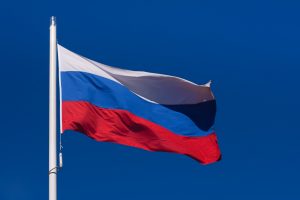The Diplomat author Mercy Kuo regularly engages subject-matter experts, policy practitioners, and strategic thinkers across the globe for their diverse insights into U.S. Asia policy. This conversation with Dr. Elizabeth Wishnick – a senior research scientist at CNA, and senior research scholar at the Weatherhead East Asian Institute at Columbia University – is the 368th in “The Trans-Pacific View Insight Series.”
Explain the core objectives of Russia’s Indo-Pacific strategy.
For one thing, Russia doesn’t talk about the “Indo-Pacific” – for Russian officials this terminology highlights efforts by the U.S. and its allies to weaken India’s cooperation with Russia and use Indian involvement in the Quad to bolster pressure on China, Russia’s strategic partner.
Two-thirds of Russian territory is located on the Asian continent and Russian leaders (as well as Soviet officials before them) have long sought to play a greater role in the Asia-Pacific. A decade ago, Russia hosted the annual APEC meeting in Vladivostok, supposedly heralding a real rebalancing of Russian foreign policy to Asia. The economic weakness of the Russian Far East – or Asia-Pacific Russia, as it is called there – has proved to be a lingering obstacle to that goal.
Russia’s March 2023 Foreign Policy Concept refers to the country as a “Eurasian and Euro-Pacific power.” Interestingly, this concept situates China and India (in that order) as top partners within the context of Russia’s Eurasian foreign policy, not as key partners in its Asia-Pacific policy. The latter has become more reactive, as Russia now claims to safeguard an open region and “non-politicized” engagement despite efforts by unnamed others (i.e. the U.S. and its allies) to sow division.
Analyze the impact of the U.S. Indo-Pacific policy on Russia.
There are complex dynamics at work here. The consolidation and expansion of U.S. Indo-Pacific partnerships is in part a response to the actions of both China and Russia as well as to the deepening Sino-Russian partnership. In the past Russia was more concerned about perceived threats from NATO, while China was more focused on threats from U.S. and its allies in the Asia-Pacific. But now Russian and Chinese officials share a view of mounting pressure from U.S. allies and partners in the region, as they emphasized in their joint statement at their 2023 summit meeting in Moscow. The growing concern in Europe over China’s challenges to Indo-Pacific security, reflected in the possibility of a NATO liaison office opening in Tokyo, will only compound this perception in Moscow and Beijing.
Examine Russia’s calculus toward ASEAN.
Russia has not engaged very effectively with ASEAN or other Indo-Pacific regional institutions, partly because playing a more active role would involve taking a position on awkward China-related issues of concern to longstanding Russian partners like Vietnam. On South China Sea issues, for example, Russia only went so far as to criticize the jurisdiction of the arbitral tribunal that rejected China’s South China Sea claims, but never explicitly embraced them. The 2016 Sino-Russian naval exercise took place in undisputed waters in the South China Sea. Instead, Russia has been more focused on expanding bilateral military and economic cooperation with individual Southeast Asian states, sometimes in competition with China for arms sales.
How has the Ukraine war affected Russia’s Indo-Pacific strategy?
Now Moscow’s Asia pivot has acquired more urgency, with Russia’s relations with Europe fractured for the foreseeable future. For decades Russian experts have discussed their country’s potential to be a swing supplier of energy, gaining leverage over importing states by its ability to shift supplies from Europe to Asia. Russia has been able to increase oil exports to India substantially and also to provide additional oil to China in the past year, reportedly at a 16-17 percent discount, but the pipeline gas that used to go to Europe can’t be rerouted. Russia is seeking to increase LNG exports to the Indo-Pacific but this will require additional investment and technology, which may be difficult to obtain.
For Russia, the Indo-Pacific is a somewhat more hospitable environment – China, India, and most ASEAN countries (with the exception of Singapore) did not impose sanctions on Russia. But the war in Ukraine harms the economies of these states by raising food and energy costs.
Assess China’s role in Russia’s Indo-Pacific planning and its implications for U.S.-China-Russia great power competition in the Asia Pacific region.
Even before the invasion of Ukraine, Sino-Russian defense cooperation in the region was deepening. They have had regular consultations on Northeast Asian security and participated in joint naval and air exercises in the region for some time. Russian sales of S-400 surface-to-air missiles and Su-35 fighter aircraft strengthen China’s hand in future regional conflict scenarios.
However, China also complicates Russia’s relations with India and Vietnam. So far Russia has managed to keep these relationships on a separate track from the Sino-Russian partnership, but this could change down the road in the event China acquires much greater economic leverage over Russia in the future. I have argued elsewhere that Russia’s ties to India and Vietnam were not a form of hedging in the Asia-Pacific; rather, Russia was seeking to define its own Asian identity, separate from the Sino-Russian partnership, within a multipolar region.
Russia’s self-inflicted reorientation away from Europe complicates these tasks if a bipolar Indo-Pacific ensues. From the U.S. point of view, this is the key issue – whether or not Russia and China might coordinate or cooperate in a potential conflict in the Indo-Pacific involving the U.S. and its allies and partners.

































